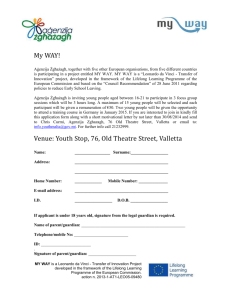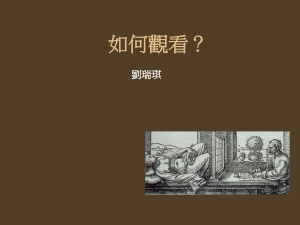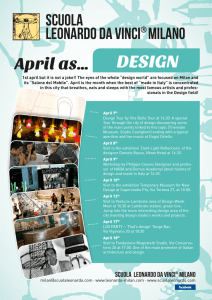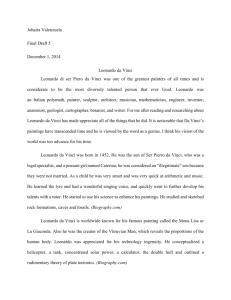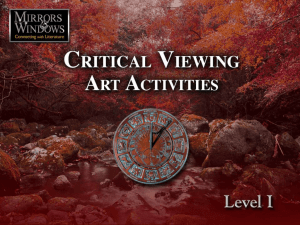Leonardo da Vinci
advertisement
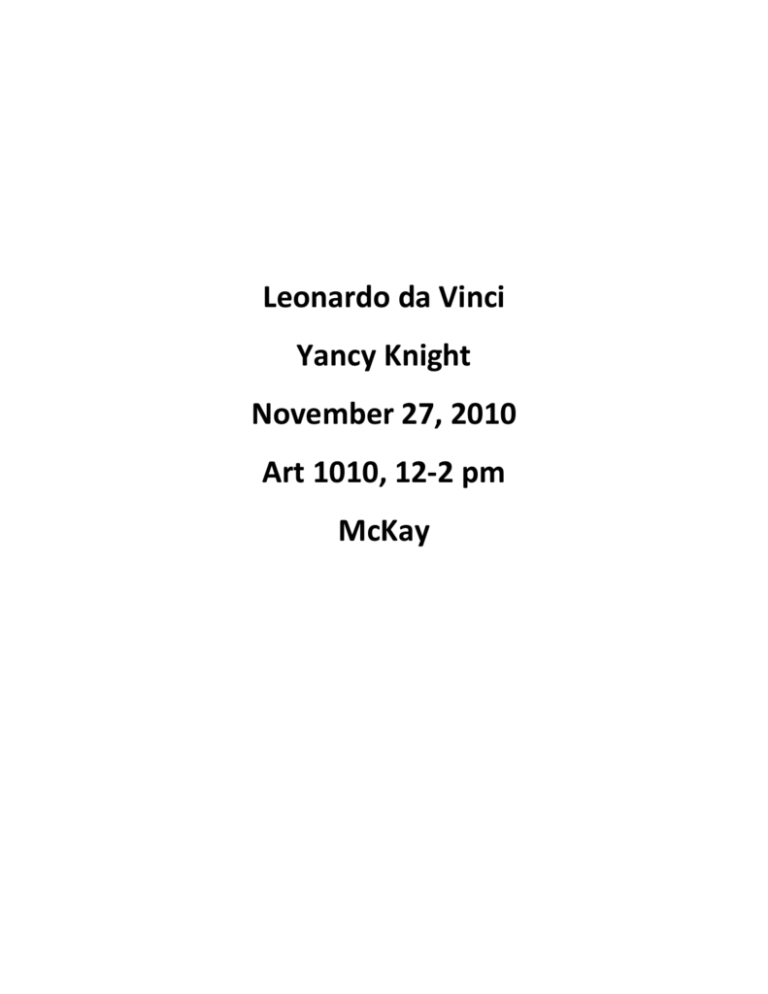
Leonardo da Vinci Yancy Knight November 27, 2010 Art 1010, 12-2 pm McKay Before starting this project, I thought I knew a lot about da Vinci. I knew he was a painter, did many sketches of a variety of things, from figures drawn from studying cadavers, to machines. I knew he was an inventor on paper, but did not actually make most of the things he sketched. I believe the most important thing about da Vinci is that he was not only a painter. I was actually very surprised at how well diversified he was. He was a skilled painter, sculptor, architect, musician, scientist, mathematician, engineer, inventor, anatomist, geologist, cartographer, botanist, and writer. I chose to research da Vinci because I have always been fascinated with his style and how talented he was. I expected to hear a lot about his paintings. Leonardo di ser Piero da Vinci was born April 14, 1452 as an illegitimate child to lawyer Piero da Vinci and peasant Caterina. Da Vinci was apprenticed to Verrocchio when he was 14. Verrocchio had one of the nicest workshops in Florence at the time, which is where da Vinci did most of his early work. Not only did he learn painting, but a variety of other skills such as metallurgy and leather working. He continued his education at Verrocchio’s workshop until the age of 20, when he qualified as a Master. Leonardo grew up in Florence during the height of the Renaissance, and as a result had a wide variety of influences. Two of his biggest influences, however, were Masaccio and Ghiberti. Contemporaries of Donatello, these two men were talented painters who were skilled in frescoes and figure drawing, respectively. Da Vinci was influences heavily by the Catholic Church, a major political entity of the time. He was commissioned many times by the church to paint paintings and create sculptures and busts of popes, cardinals, and saints. Lorenzo was also very close to Lorenzo de Medici, the powerful Florentine ruler of the time. Although Leonardo was skilled in many arts, he is best known as a painter. He is famous for two of his paintings especially, the Mona Lisa, and the Last Supper. His painting style and subject changed only slightly over the course of his career. While studying under Verrocchio, he used a very formal layout for his mostly religiously-subjected paintings, but as his career progressed, he began to use a less formal layout, such as using oblique angles. Much of da Vinci’s work was commissioned by the Catholic Church and was mostly functional, but some of his work is shrouded in mystery as many conspiracy theorists scrutinize his works, especially the Mona Lisa, the Last Supper, Madonna of the Rocks, and other famous pieces. His sketch of the Vitruvian Man is also very famous. Leonardo has always been held in high regards. In his time, he was seen as a celebrity, to the point that the king of France supported him in his old age, and is said to have held da Vinci in his arms when he died. Today, da Vinci is still heralded as one of the most brilliant, widely-talented individuals to have ever lived. His works appear all over, such as on the dollar, the euro, t-shirts, reproductions, and parodies. I personally am a huge fan of Leonardo da Vinci. Da Vinci will always be remembered as a brilliant, highly diversified individual. I believe the most important thing to know about da Vinci is that he was not only a patron of the arts, but of science as well. Today, these two fields seem to be opposites, but da Vinci proves that they are really much more similar than most people realize. Works Cited "BBC Science | Learn about Leonardo da Vinci ." BBC - Homepage. N.p., n.d. Web. 2 Dec. 2010. <http://www.bbc.co.uk/science/leonardo/>. "Leonardo da Vinci: Experience, Experiment, Design." Studio International - Visual Art, Design and Architecture. N.p., n.d. Web. 1 Dec. 2010. <http://www.studiointernational.co.uk/reports/da_vinci.asp>. Richter, Jean Paul. "The Literary Works of Da Vinci Index." Internet Sacred Text Archive Home. N.p., n.d. Web. 2 Dec. 2010. <http://www.sacred-texts.com/aor/dv/index.htm>. "Siegfried Woldhek shows how he found the true face of Leonardo | Video on TED.com." TED: Ideas worth spreading. N.p., n.d. Web. 1 Dec. 2010. <http://www.ted.com/talks/siegfried_woldhek_shows_how_he_found_the_true_face_of _leonardo.html>. Stanley, Diane. Leonardo da Vinci . New York: Morrow Junior Books, 1996. Print. "Web Gallery of Art, image collection, virtual museum, searchable database of European fine arts (1000-1850)." Web Gallery of Art, image collection, virtual museum, searchable database of European fine arts (1000-1850). N.p., n.d. Web. 1 Dec. 2010. <http://www.wga.hu/frames-e.html?/html/l/leonardo/>. "the drawings of Leonardo da Vinci." the drawings of Leonardo da Vinci. N.p., n.d. Web. 1 Dec. 2010. <http://www.drawingsofleonardo.org/>.


